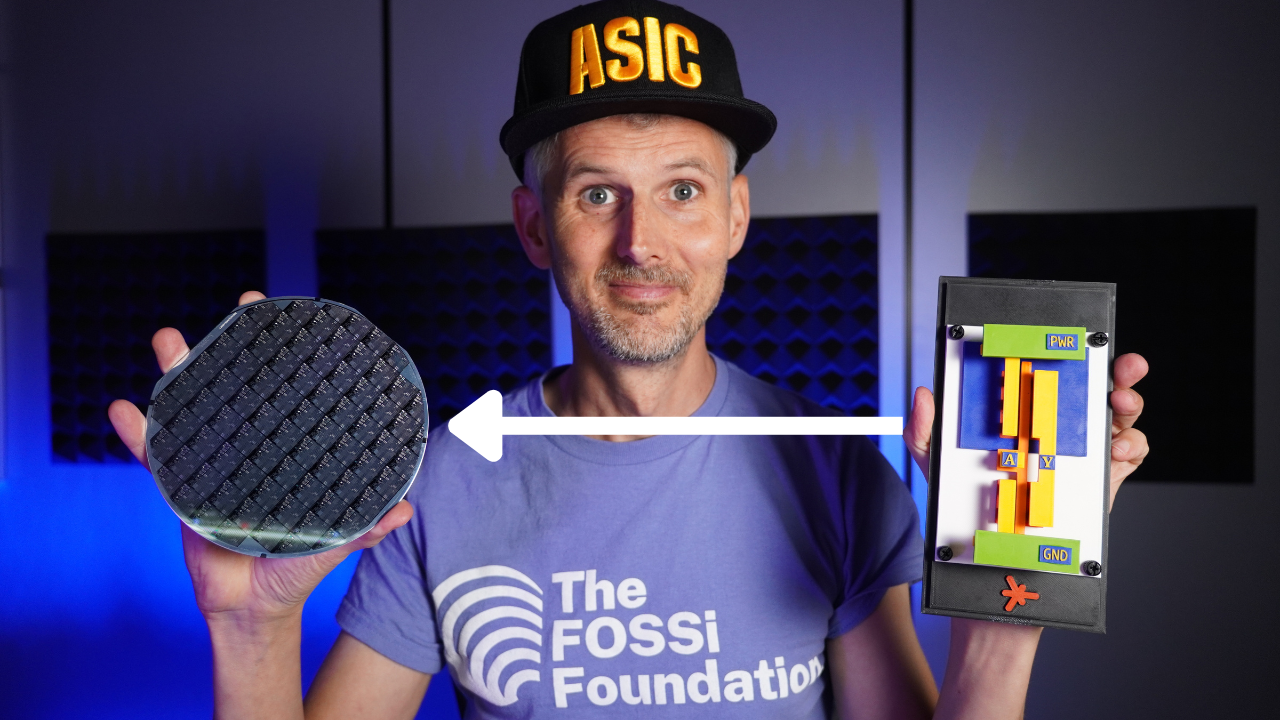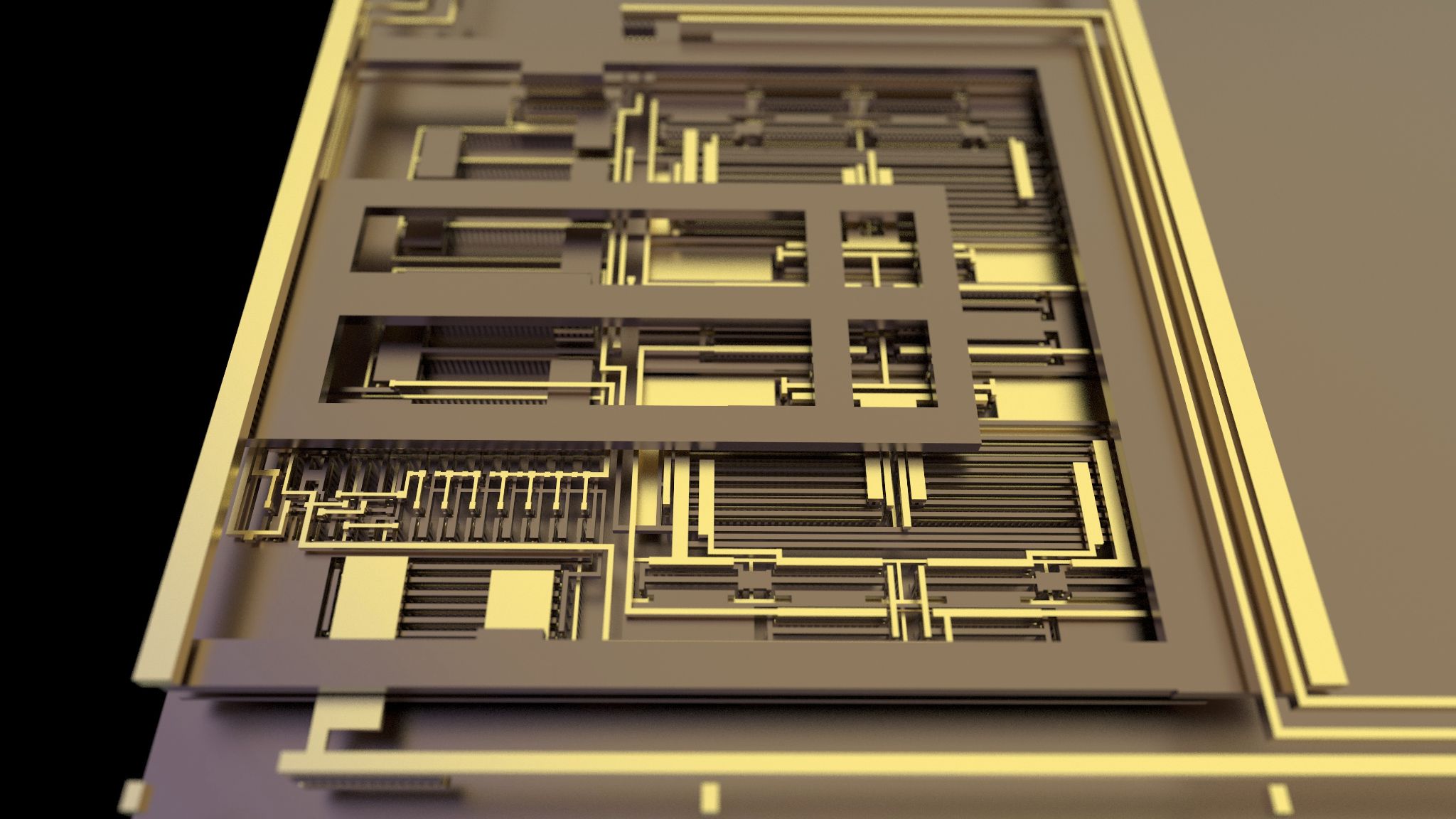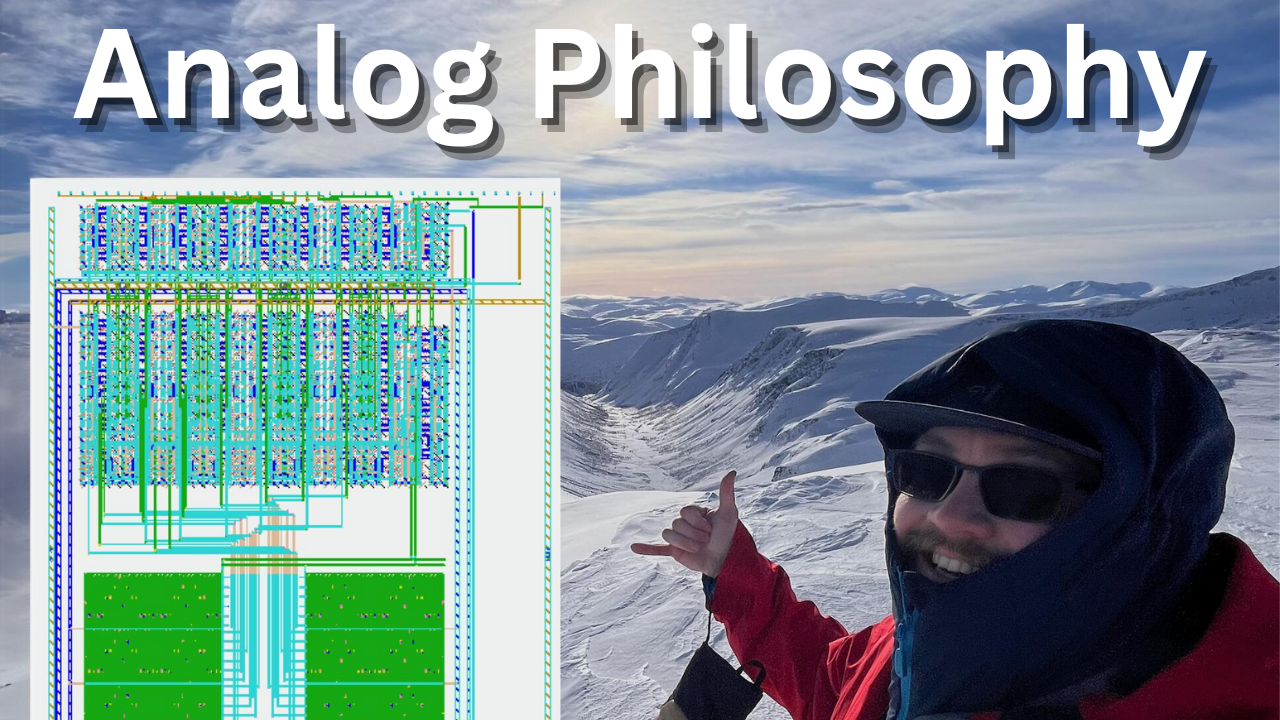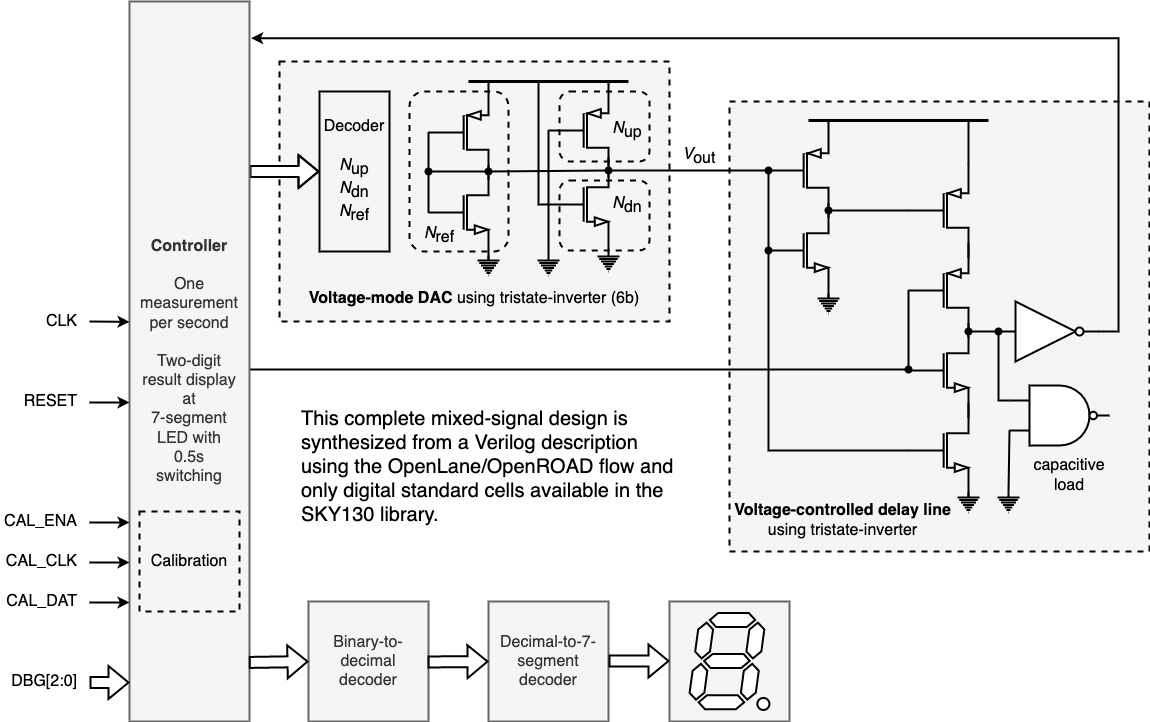Below you will find pages that utilize the taxonomy term “Analog”
Full Analog Course Content

Part 1: Schematic Capture with Xschem
While it’s possible to just draw transistors directly - for example in SiliWiz, this doesn’t scale well and gets confusing fast. We want to draw a circuit diagram first, with levels of hierarchy for more complex designs. These can then be simulated and checked that specifications are met before moving onto layout.
Lab 1.1: Try the Xschem demos
Lab 1.2: Draw your own circuit
- Draw your own circuit and get it ready for simulation.
- If you don’t have a circuit ready, you can use one of the demos.
- Follow best practices.
Part 2: Simulation
After you have a schematic and have exported the netlist to a spice file, we can use ngspice to simulate it. In this part of the course you will start to learn spice, using it to simulate demo designs and then your own.
My analog microelectronics journey

This article will give you some insight into my journey into the world of analog microelectronics, as told in my recent talk at ORConf 2024.
Back in 2020, inspired by Tim Ansell’s announcement of free tapeouts, I jumped headfirst into the world of open-source ASIC design. My first chip was a digitally focused project, reflecting my background in FPGA programming. It was amazing to see the power of digital abstraction—designing with ones and zeros, instantiating tons of transistors with a single line of code—but it also made me appreciate the incredible complexity hidden beneath the surface.
Tiny Tapeout Goes Analog!

Tiny Tapeout 6 marked a significant milestone by introducing support for analog and mixed-signal ASIC designs. This innovation opened up a world of possibilities for open-source chip development, building on the project’s success in the digital realm.
Prior to Tiny Tapeout 6, only digital designs were supported. However, the demand for analog and mixed-signal capabilities was evident. In an interview, Carsten Wulff, Principal IC Scientist at Nordic Semiconductor, expressed his enthusiasm for the open-source ASIC movement, noting that a key strength of this approach lies in the mixed-signal domain. FPGAs and microcontrollers excel in digital applications, but mixed-signal designs on ASICs offer unique advantages and capabilities.
Analog Philosophy with Carsten Wulff

In this insightful interview, I talk with Carsten Wulff, Principal IC Scientist at Nordic Semiconductor, about all things analog ASIC design.
Carsten kicks things off by sharing a fascinating anecdote about how he ended up designing an analog SAR during his winter holiday in the Norwegian mountains, sparked by the opportunity to include analog designs on Tiny Tapeout 6.
The conversation then shifts to Carsten’s thoughts on the accessibility of 130nm technology for analog design, which he believes is “the last comfortable node”. While larger designs with millions of digital gates might not be suitable, 130nm shines for analog applications, offering a sweet spot between performance and cost-effectiveness.
Analog with Digital Standard Cells

Harald Pretl made a fascinating submission to Tiny Tapeout 3, an analog circuit made from digital standard cells.

It builds a DAC out of a lot of tristate inverters, and a big capacitor by ganging up a lot of NAND gates.
In this interview with Harald we discuss how it works and how he made it and simulated it.
You can check his design here, including the source and GDS.
Zero to ASIC Analog Course

Analog ticket options
| Silicon | Boron | Arsenic | |
|---|---|---|---|
| Guaranteed ASIC manufacture ⓘ | ✅ 160x225 um, 2 analog pins | ✅ 334x225 um, 4 analog pins | ✅ |
| Access to 3.5 hours recorded video content & 11 labs | ✅ | ✅ | ✅ |
| Access to updates of the course material | ✅ | ✅ | ✅ |
| Recorded solution videos | ✅ | ✅ | ✅ |
| Access to discord community server | ✅ | ✅ | ✅ |
| Access to weekly community call | ✅ | ✅ | ✅ |
| Access to twice monthly call with analog expert Prof. Harald Pretl. | ✅ | ✅ | ✅ |
| Access to the material for the lifetime of the course ⓘ | ✅ | ✅ | ✅ |
| Personal onboarding and introduction | ✅ | ✅ | ✅ |
| Your ASIC mounted on a PCB breakout board | $150 + Postage | ✅ | ✅ |
| 1 to 1 office hours support with Matt | ❌ | 2 hours | 4 hours |
| 1 to 1 office hours support with Harald | ❌ | ❌ | 2 hours |
| Application to ChipIgnite - design can be closed source | ❌ | ❌ | ✅ |
| Team access ⓘ | ❌ | ❌ | ✅ |
- Check your email for onboarding information after your purchase.
- Receipt provided upon purchase for deducting as a business expense.
- Contact me if your business has any special requirements.
- Secure payment handling by Stripe.
- Not ready? Join the mailing list to receive updates and promotional discount codes.
What do people say about the course?
After a long wait, I finally got the chance to take the Zero to ASIC Analog Course, and it’s fantastic! The comprehensive curriculum covers everything from schematic capture to GDS file generation, offering a deep understanding of the entire design process, along with plenty of debugging opportunities. I highly recommend that every Analog Design Engineer acquire these skills to become a full-stack developer in this complex yet fascinating field.
Vishal Bingi (analog course)
The Zero to ASIC community is incredibly helpful and welcoming. Having access to a group of knowledgeable and supportive folks willing to help you learn and troubleshoot your design is priceless.
Sean Patrick (analog course)
The Zero to Asic analog course is a wonderful course put together by Matt . He and his team have meticulously planned the course with lots of good examples and support to get started with the tools for designing your own chips. Hats off to the team for developing such a course and making it available for the users.
Sudhansu Mishra (analog course)
Course Overview
- Read the full course syllabus.
- We will concentrate on analog circuit layout and tapeout.
- Circuit design is not covered in the course - you can use one of our examples or bring your own schematic.
- A virtual machine is available or you can install the tools manually.
- The course is continually updated for the latest tooling and PDK.
Format
- 11 hands-on projects, supported with text guides and over 6 hours of videos.
- Support via:
- Recorded solutions videos.
- Discord community server.
- Twice Monthly analog specific call. Harald is currently joining once per month.
- 1 to 1 office hours with Matt: access to expert help on the Boron and Arsenic level tickets.
- Asynchronous - do in your own time.
- Guaranteed ASIC manufacture with TinyTapeout (specs).
- High resolution set of digital images of the decapped ASIC - see FAQ.
- Access to the course materials for the lifetime of the course.
- Course completion certificate.
Prerequisites
- Basic Linux command line experience, Git & Make is helpful.
- Some programming experience helpful.
- Apple Silicon Mac users will need to use the Docker instead of the Virtual Machine. The videos were made with the VM so there are some differences.